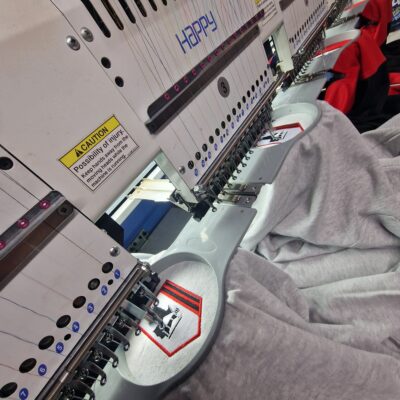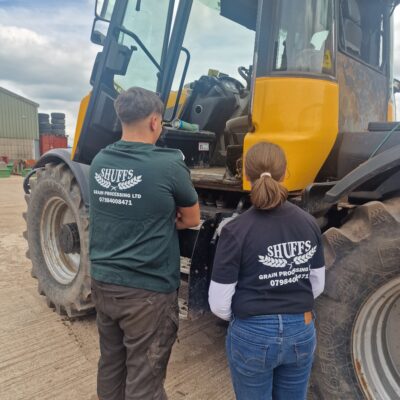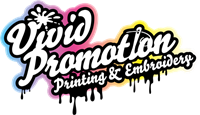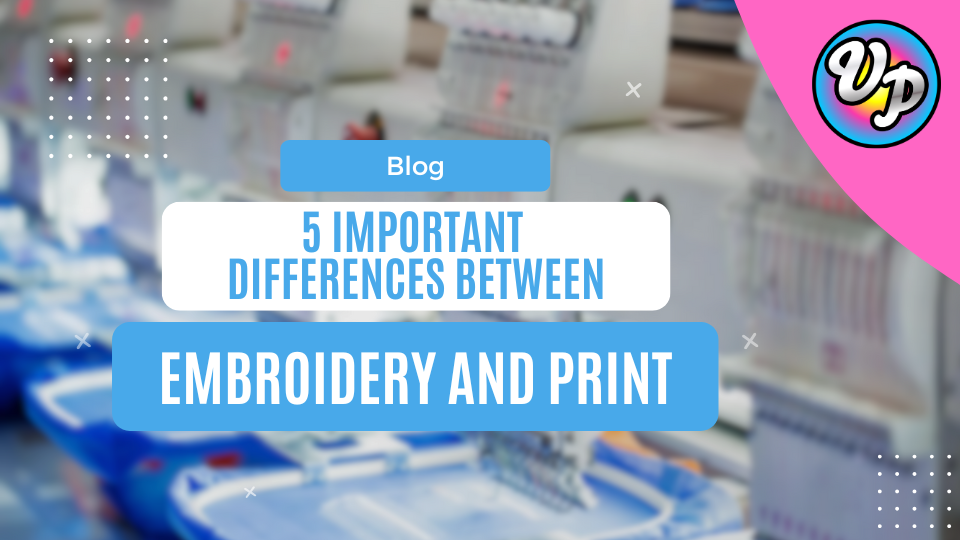Branded Workwear
5 Important Differences Between Embroidery and Printing for Workwear
When it comes to customising branded workwear, businesses often face a key decision: embroidery or printing. Both methods have their advantages and are suited for different needs. Understanding the differences can help you choose the best option for your workwear. Let’s break down the key differences between embroidery and printing for workwear to help you make the right choice.
Appearance
- Embroidery: Embroidery offers a textured, premium look with raised stitching that adds a sense of sophistication. It’s ideal for logos and designs that need to convey professionalism and durability. The richness of embroidery’s texture ensures your brand’s logo stands out, making a lasting impression. For workwear, embroidery often symbolises quality and prestige.
- Printing: Printed designs provide a flat and smooth finish, allowing for vibrant colors and intricate details. It’s a great option for larger or more complex designs that require high precision. The ability to include gradients and photo-realistic images gives printing an edge for creative or promotional designs. Printing for workwear is often chosen for its versatility and ability to deliver visually impactful designs.

Durability
- Embroidery: Stitched designs are highly durable and can withstand frequent washing and heavy use without fading or peeling. This makes embroidery perfect for long-term workwear. Even in tough working environments, embroidered designs maintain their quality and resilience. Embroidery ensures your workwear looks professional for years to come.
- Printing: Printing methods, such as screen printing or heat transfers, may fade or crack over time, especially with repeated washing. However, modern printing techniques have improved durability for short- to medium-term use. For example, direct-to-film (DTF) printing offers sharper results and better longevity compared to older methods. For short-term projects or promotional workwear, printing is a cost-effective solution.
Material Compatibility
- Embroidery: Works best on thicker fabrics like cotton, polyester, fleece, and denim. It’s less suitable for lightweight or stretchy materials, as the stitching can cause puckering. Embroidery’s strength lies in its adaptability to structured garments, such as hats and jackets, where it creates a polished, professional finish. For workwear designed for durability and formality, embroidery is the ideal choice.
- Printing: Works well on a wide range of fabrics, including lightweight and stretchy materials. It’s ideal for t-shirts, hoodies, and other casual apparel. Printing is particularly effective for large surface areas, making it a popular choice for vibrant, full-front designs or promotional graphics. Printing for workwear offers flexibility across different garment styles and fabric types.

Cost
- Embroidery: Generally more expensive, especially for intricate or large designs, as it requires more time and resources. However, it’s cost-effective for smaller logos or bulk orders. The initial setup cost for embroidery can be higher, but the longevity of the design often offsets this expense. For high-quality, long-lasting workwear, embroidery is a worthwhile investment.
- Printing: Typically more affordable, particularly for large designs or high-volume orders. The cost depends on the printing method and the complexity of the design. Printing offers an economical solution for promotional items or one-off projects, making it accessible for businesses on a tighter budget. For cost-conscious workwear projects, printing is an excellent choice.
Suitability
- Embroidery: Best for corporate workwear, uniforms, and items requiring a polished, long-lasting finish. It’s ideal for polo shirts, jackets, hats, and bags. Embroidery is the preferred choice for businesses looking to establish a high-end, professional image through their workwear. It’s particularly popular in industries where durability and professionalism are key.
- Printing: Well-suited for promotional apparel, casual uniforms, or items with vibrant, detailed designs. T-shirts, hoodies, and lightweight clothing benefit most from printing. It’s particularly popular in industries like sportswear and events, where bold, eye-catching designs are a priority. Printing for workwear offers a versatile and creative way to showcase your brand.
Additional Considerations
When deciding between embroidery and printing for workwear, it’s important to think about the type of branding you want to convey. Embroidery is often associated with tradition and elegance, making it perfect for companies that value a classic, timeless aesthetic. On the other hand, printing is ideal for businesses that want to showcase creativity and modernity through bold, colorful designs.
Environmental impact is another factor to consider. Some modern printing methods use eco-friendly inks and processes, while embroidery, depending on the thread materials used, can also be a sustainable option. Discussing these options with your supplier can help you make an informed decision.
Some Final Thoughts
Both embroidery and printing for workwear have their strengths, and the right choice depends on your specific needs. If you’re looking for a durable, professional appearance, embroidery is the way to go. For bold, intricate designs at a lower cost, printing might be the better option. Consider your budget, fabric type, the intended use of your workwear, and the image you want to project to make the best decision for your brand. Whether you opt for embroidery or printing for workwear, customised garments are an excellent way to enhance your brand’s visibility and professionalism.


